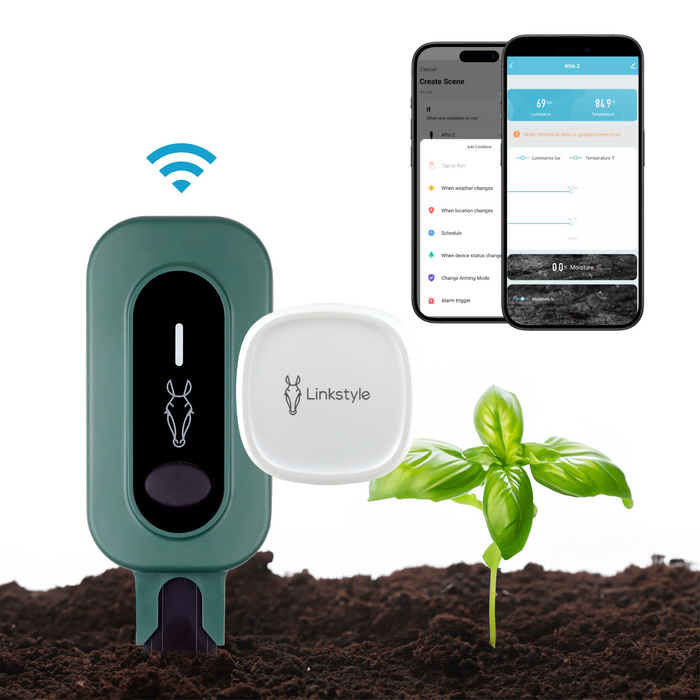Maximizing Home Automation with Linkstyle: Tips and Tricks for Seamless Integration

Welcome to the future of living, where your home listens, learns, and adapts to your lifestyle. With Linkstyle, turning your house into a smart home is easier than ever. Whether you're a tech enthusiast or a beginner, these tips and tricks will guide you through maximizing your home automation experience with Linkstyle.
Pairing Your Devices
Getting started with Linkstyle's smart devices is a breeze. Follow this step-by-step guide to ensure a flawless setup with products like the NexoHub Gateway, which acts as the central hub for all your smart devices.
Download the Linkstyle App: First, ensure you have the Linkstyle App installed on your smartphone or tablet. It's available free for both iOS and Android device
Bluetooth Pairing: Linkstyle offers a range of devices which can easily connect to your mobile device via Bluetooth. These would include the Matrix II Smart Lock Key Box, your 24/7 Reception for rental properties, or easy access for spare keys at your home; and the Tocabot Smart Switch Button Pusher for your favorite home goods that dont have automation built in yet, set a schedule for the Tocabot to start your Keurig Coffee Maker in the morning.
- Pairing with Bluetooth is a breeze: Linkstyle devices will each have a unique way of activating pairing mode the Tocabot Smart Switch Button Pusher is set to pairing by switching on and off and the Matrix II Smart Lock Key Box can be set by placing your palm across the keypad, you can find all these details in depth in our online manuals. Plus these devices can be paired to your mobile device easily via bluetooth.
WiFi Pairing: To use third party web apps like Alexa and google home you have the ability to pair a Linkstyle Gateway which syncs to your wifi and gives you full remote control of your devices. You can also use the Gateway to pair your favorite bluetooth devices to unlock even more features such as push notifications and remote control.
Wi-Fi Connectivity:
- Make sure your Wi-Fi is set to 2.4 GHz, as Linkstyle devices perform optimally on this frequency band.
- When linking the Linkstyle Gateway provide your Wi-Fi credentials in the app when prompted.
Finalize Setup:
- Once connected via the NexoHub Gateway, you will need to associate your Linkstyle device with the Gateway. This way your devices will appear on your Gateway dashboard, allowing you to control and monitor them remotely, as well as set notifications to alert you of your devices status.
- For the best results of the connection of your Wifi to the Gateway and therefore to your Linkstyle devices you can refer to this article on our community page, How Can You Optimize the Placement of Your Linkstyle Gateway?
By following these steps, your Linkstyle devices will be ready to enhance your daily life with convenience and connectivity.
Optimizing Smart Device Use
Discover the full potential of your Linkstyle smart devices by configuring them for peak performance:
-
Wi-Fi Configuration: For a stable and smooth operation, ensure your home Wi-Fi network is configured to 2.4 GHz. This frequency offers better range and penetration, which is crucial for smart home devices.
-
App Customization: Personalize your Linkstyle App settings to suit your preferences. This includes setting notifications, automating device routines, and managing user access efficiently.
-
Regular Updates: Keep your Linkstyle App and devices, such as the Matrix Smart Lock Key Box, updated to the latest firmware for enhanced functionality and security.
-
Data Monitoring: Use the app to monitor device data such as energy usage and security status, especially with devices like the Hydrozen Smart Water Timer as this will track the amount of water being used in the garden on a daily, weekly and even monthly basis.
Optimizing Smart Device Use
Discover the full potential of your Linkstyle smart devices by configuring them for peak performance:
- Wi-Fi Configuration: For a stable and smooth operation, ensure your home Wi-Fi network is configured to 2.4 GHz. This frequency offers better range and penetration, which is crucial for smart home devices.
-
App Customization: Personalize your Linkstyle App settings to suit your preferences. This includes setting notifications, automating device routines, and managing user access efficiently.
-
Regular Updates: Keep your Linkstyle App and devices, such as the Matrix Smart Lock Key Box, updated to the latest firmware for enhanced functionality and security.
-
Data Monitoring: Use the app to monitor device data such as energy usage and security status, especially with devices like the Hydrozen Smart Water Timer as this will track the amount of water being used in the garden on a daily, weekly and even monthly basis.
Creating Smart Schedules
Efficiently manage your smart devices and home systems by integrating them with Google Calendar:
-
Automate Routines: Use the Linkstyle Apps DIY feature to schedule operations for devices like the TocaBot for to turn a light on at dusk, or turn the coffee maker on at 5am sharp. The Hydrozen Smart Water Timer can make sure your garden is being properly irrigated day in and day out. While the Afra Smart Soil Sensor can let you know if a hot day caused some issues in the garden as well.

-
Optimize Energy Use: Automation is the key to working smarter with less effort at home, or at work.
-
Family Coordination: Share schedules with family members so everyone is informed about device operations, fostering a coordinated and efficient home environment. The Linkstyle App allows you to share access to family members so they can create their own account, or use the same login and have access to all the same Linkstyle Smart Products across multiple devices.
-
Holiday Mode: Plan ahead by scheduling devices to simulate occupancy while you're away, enhancing security and peace of mind. Make sure your cameras are plugged in and their motion settings are properly set, the Mira Indoor Security Camera with its Smart AI Motion Detection, Infrared Night Vision, Two-Way Audio, and Automatic Video Patrols Video make it an essential part of home monitoring.
-
Automate Garden Care: Schedule your Hydrozen Smart Water Timer to water your garden at optimal times, ensuring healthy plant growth without wasting water. Pair this with the Afra Smart Soil Sensor to receive alerts on your smartphone if soil conditions require attention, like adjusting watering times after a particularly hot day.

Online Support and Guides
The Linkstyle Team is always ready to help support you on your smart home journey. You can reach out by phone, email or on the Linkstyle Community Forum. There are also helpful video guides on Youtube or on the individual device resource pages which you can find by scanning the QR code on the back of your smart devices.Transforming your home into a smart haven is both easy and rewarding with Linkstyle. By pairing your devices, optimizing their use, and creating smart schedules, you'll ensure that your home is efficient, comfortable, and secure. Unlocking the Enchanted Life!Embrace the potential of smart automation with Linkstyle products like the NexoHub Gateway, Matrix Smart Lock Key Box, and TocaBot, and enjoy the convenience and control that comes with a well-connected home.Whether you're optimizing daily routines or enhancing security, Linkstyle empowers you to live smarter every day. -




![[280246%2F9132701%2Fmceclip0]](https://d28lcup14p4e72.cloudfront.net/280246%2F9132701%2Fmceclip0.png)








